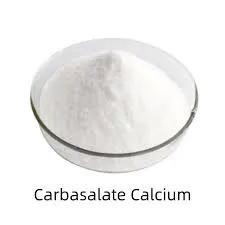- Afrikaans
- Albanian
- Amharic
- Arabic
- Armenian
- Azerbaijani
- Basque
- Belarusian
- Bengali
- Bosnian
- Bulgarian
- Catalan
- Cebuano
- Corsican
- Croatian
- Czech
- Danish
- Dutch
- English
- Esperanto
- Estonian
- Finnish
- French
- Frisian
- Galician
- Georgian
- German
- Greek
- Gujarati
- Haitian Creole
- hausa
- hawaiian
- Hebrew
- Hindi
- Miao
- Hungarian
- Icelandic
- igbo
- Indonesian
- irish
- Italian
- Japanese
- Javanese
- Kannada
- kazakh
- Khmer
- Rwandese
- Korean
- Kurdish
- Kyrgyz
- Lao
- Latin
- Latvian
- Lithuanian
- Luxembourgish
- Macedonian
- Malgashi
- Malay
- Malayalam
- Maltese
- Maori
- Marathi
- Mongolian
- Myanmar
- Nepali
- Norwegian
- Norwegian
- Occitan
- Pashto
- Persian
- Polish
- Portuguese
- Punjabi
- Romanian
- Russian
- Samoan
- Scottish Gaelic
- Serbian
- Sesotho
- Shona
- Sindhi
- Sinhala
- Slovak
- Slovenian
- Somali
- Spanish
- Sundanese
- Swahili
- Swedish
- Tagalog
- Tajik
- Tamil
- Tatar
- Telugu
- Thai
- Turkish
- Turkmen
- Ukrainian
- Urdu
- Uighur
- Uzbek
- Vietnamese
- Welsh
- Bantu
- Yiddish
- Yoruba
- Zulu
12-р сар . 12, 2024 11:43 Back to list
ivermectin pour on vs injectable
Comparing Ivermectin Pour-On and Injectable Formulations A Comprehensive Overview
Ivermectin is a potent anthelmintic drug widely used in veterinary medicine to treat various parasitic infections in livestock and companion animals. Its effectiveness against a range of parasites, including nematodes, arthropods, and ectoparasites, has made it a staple in animal health management. However, there are different formulations of ivermectin available in the market, with the two most common being pour-on and injectable forms. This article aims to compare these two formulations in terms of administration, efficacy, safety, and practicality, helping veterinarians and animal owners make informed decisions.
Administration Methods
The primary difference between ivermectin pour-on and injectable formulations lies in their method of administration. Pour-on formulations are applied topically to the animal's skin, usually along the backline, while injectable formulations are delivered via subcutaneous or intramuscular injections.
The pour-on method is typically less invasive, reducing stress for both the animal and handler. It is also easier to administer, making it a favorable option for large herds where individual animal restraint can be challenging. On the other hand, injectable ivermectin requires careful handling and preparation, with the need for syringes and needles, which may pose risks if not managed properly.
Efficacy and Duration of Action
Both formulations of ivermectin are effective in treating various parasitic infections; however, studies have shown some differences in their pharmacokinetics. Injectable ivermectin generally provides faster absorption and a quicker onset of action compared to the pour-on version. This can be particularly advantageous in urgent situations where immediate parasite control is necessary.
The duration of action also varies between formulations. While injectables tend to have a prolonged effect, pour-on formulations may require more frequent applications to maintain effectiveness, particularly in environments with high parasite loads. This could lead to variations in treatment protocols depending on the specific operational needs and the parasite challenges faced by the herd or flock.
ivermectin pour on vs injectable

Safety Considerations
Safety is a crucial factor in selecting the appropriate formulation for treatment. Ivermectin is usually well-tolerated in most animals; however, inappropriate use or dosage can lead to adverse effects. Both formulations carry risks, but the injectable form may present a higher risk of injection-site reactions, abscess formation, and other complications related to needle use.
Conversely, pour-on formulations may pose a risk of skin irritation or improper application leading to suboptimal dosing. It is essential to follow the manufacturer's instructions and consider individual to animal characteristics when deciding on a formulation.
Practicality and Cost
In terms of practicality, pour-on formulations offer ease of use, especially in larger operations where multiple animals need to be treated quickly. Moreover, they eliminate the need for syringes and needles, which can streamline the treatment process and reduce the chances of injury or contamination.
However, injectable ivermectin might be more beneficial for specific situations, such as treating individual animals with urgency or when it is crucial to ensure precise dosing. Moreover, the cost may vary based on formulation and brand, but typically, pour-on formulations can be considered more cost-effective for treating larger groups of animals.
Conclusion
Both ivermectin pour-on and injectable formulations play vital roles in managing parasitic infections in animals. The choice between these formulations should be based on various factors, including the type of parasites being targeted, the size of the herd, individual animal requirements, and the practicality of administration methods. Ultimately, understanding the strengths and weaknesses of each formulation allows veterinarians and animal owners to optimize their parasite management strategies while ensuring the health and welfare of their animals. By carefully considering these aspects, effective and safe treatment protocols can be developed, safeguarding livestock from the harmful effects of parasitic infections.
-
Guide to Oxytetracycline Injection
NewsMar.27,2025
-
Guide to Colistin Sulphate
NewsMar.27,2025
-
Gentamicin Sulfate: Uses, Price, And Key Information
NewsMar.27,2025
-
Enrofloxacin Injection: Uses, Price, And Supplier Information
NewsMar.27,2025
-
Dexamethasone Sodium Phosphate Injection: Uses, Price, And Key Information
NewsMar.27,2025
-
Albendazole Tablet: Uses, Dosage, Cost, And Key Information
NewsMar.27,2025













